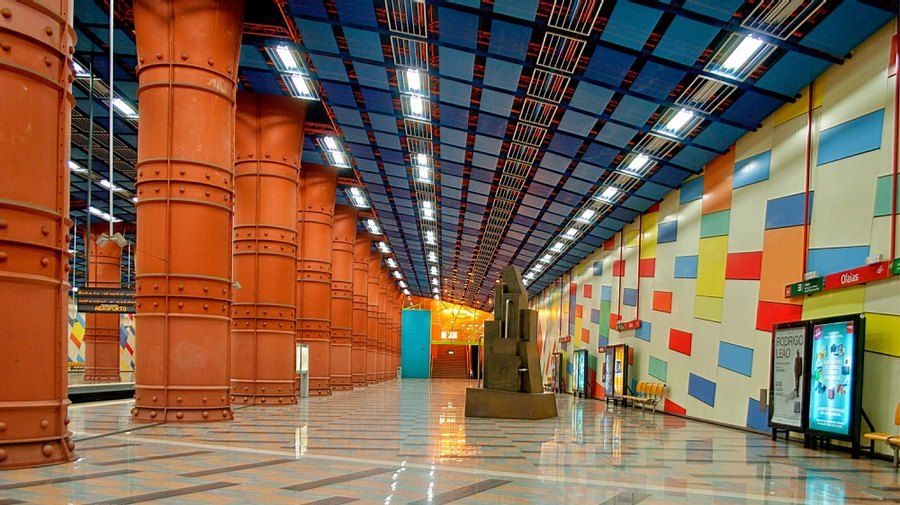Currently, Lisbon's metropolitan service offers four lines, with the possibility of intersecting each other, with a total of 56 stations. With some stations more recent than others, passengers in certain stations will be able to appreciate real works of art.

The station was inaugurated in 1998 to serve Expo'98 visitors. Between Alameda and Bela Vista stations and Olaias station is part of the Red Line of the Metropolitano de Lisboa. In 2012, the station was considered one of the most beautiful in Europe, in an article by Impact your World, authored by CNN North America. In 2022, the ABC newspaper highlighted Olaias station as one of the most beautiful in the world. The infrastructure design was conceived by the architect Tomás Taveira, who designed an imposing station with high pillars in the industrial style and with many colours, both on the platform and throughout the route that passengers take to enter or exit the metro.

The Jardim Zoológico station is part of the Blue Line, one of the first metro stations to be inaugurated in Lisbon. Between Laranjeiras and Praça de Espanha stations, Jardim Zoológico station, until 1998 was called Sete Rios, the square where it is located. The current artistic interventions are by Júlio Resende, who decided to decorate the station with several cave paintings that were allusive to the animals present in the Lisbon Zoo. With vibrant colours, the Jardim Zoológico station is a pleasant place to wait for transport.
Parque

It is once again a pioneering station in the Metropolitano de Lisboa project. Inaugurated in 1959, the station serves the Parque Eduardo VII area. In 1994, the space was completely remodelled and with the right to artistic interventions by Françoise Schein and Federica Matta who worked on the theme of the Portuguese Discoveries and human rights, using shades of blue painted on tiles. A memorial to Aristides de Sousa Mendes was also placed at the station, through a sculpture designed by João Cutileiro.

Campo Grande station integrates two lines, the Yellow Line and the Green Line. It opened in 1993 and is the first station to be built on a viaduct. Those who disembark at the station can easily reach the Faculty of Sciences of the University of Lisbon or even Lusófona University. The plastic interventions were carried out by Eduardo Nery, who opted to place Portuguese tiles, arranged unconventionally.
The Metropolitano de Lisboa network continues to expand, with the construction of a new line, the Violet Line, and the expansion of the Green Line. It remains to be seen whether there will be seasons as beautiful as those mentioned.
Deeply in love with music and with a guilty pleasure in criminal cases, Bruno G. Santos decided to study Journalism and Communication, hoping to combine both passions into writing. The journalist is also a passionate traveller who likes to write about other cultures and discover the various hidden gems from Portugal and the world. Press card: 8463.
















They are pretty. But they lack serious cleaning and serious maintanance. They all need serious renovation. Many flooring tiles are chipped, some holes in them. The elevators and escalators tend to be out of service more time then they are working and when they are out of service they can stay like this for months. Clearly the CML don't really care about people who use public transport and don't want to attract more people who use cars to use the metro (and busses) more regularly. That's a shame because building the metro was expensive so under utilizing it is almost a crime.
By Amit Cohen from Lisbon on 24 Feb 2023, 13:52
The designs are very beautiful and it is the nicest Metro system to travel in the world!
By Lisa from Other on 28 Feb 2023, 00:02
Overall the Portuguese are much better at building than at maintaining. They spend a lot of money (maybe EU money) on new construction, but then they don't have the funds available to maintain these in a good working condition.
The fact that the Portuguese government doesn't care about people is best demonstrated in the state of their pedestrian walk ways. Life in Portugal must be horrific for those in a wheel chair.
By Tom from Lisbon on 28 Feb 2023, 09:01